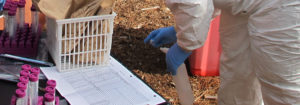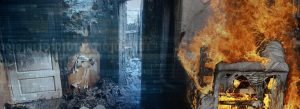Date May 2018 Overview From January 22 to 25, 2018, RTI International, the National Institute of Justice (NIJ) and the Forensic Technology Center of Excellence (FTCOE) held the 2018 Impression, Pattern and Trace Evidence Symposium (IPTES) in Arlington, VA, to…
Category: Trace Evidence (page 2)
Conference Proceedings: 2018 Research and Development Symposium
Date April 2018 Overview The 2018 National Institute of Justice (NIJ) Forensic Science Research and Development (R&D) Symposium is intended to promote collaboration and enhance knowledge transfer of NIJ-funded research. The NIJ Forensic Science R&D Program funds both basic or…
Success Story: Establishing a “Microbial Clock” to Improve Time of Death Prediction
National Institute of Justice and Multi-Institute Academic Team Date April 2018 Overview The postmortem interval (PMI) is the time that has elapsed since a person’s death. Determining the PMI at a crime scene may help to recreate the victim’s timeline…
Applied Polarized Light Microscopy for Trace Evidence Examiners
Date April 2018 Overview Polarized light microscopy (PLM) is a technique commonly used in the field of forensic science. PLM characterizes and identifies trace evidence found at crime scenes, such as fibers, hairs, paints, and glass fragments. This workshop introduced…
Success Story: Advancing the Forensic Analysis of Ignitable Liquid Fuel Fires
National Institute of Justice and JENSEN HUGHES Date February 2018 Overview Investigating fires with “liquid fuel” is particularly challenging, as the combustion of building materials often conceals the presence of the fuel. JENSEN HUGHES, led by Dr. Daniel Gottuk, evaluated…
Detection of Organic Gunshot Residue Using Capillary Microextraction of Volatiles with Cryofocusing
Date July 2017 Overview Researchers at Florida International University’s (FIU’s) International Forensic Research Institute evaluated the capability of capillary microextraction of volatiles (CMV) to extract the volatile organic compounds (VOCs) that constitute organic gunshot residue (OGSR) on the hands of…
Evaluation of Existing Technologies for Novel Analysis and Probabilistic Interpretation of Organic Gunshot Residue
Date July 2017 Overview Firearms exposure has traditionally been monitored by screening for the presence of inorganic particles prevalent in gunshot residue (GSR). These inorganic compounds are associated with the primer in ammunition. Recent research efforts have explored alternative approaches…
2015 TechBeat Articles Featuring the FTCOE
Gunshot Residue Analysis Featured in New FTCOE Report Series Issue: Sep/Oct 2015 Pages: 3-8 Click here to read the article Familial DNA Project: Engaging Stakeholders, Sharing Opinions Issue: May/Jun 2015 Pages: 13-14 Click here to read the article Cutting-Edge Vacuum Technology: Locates hard to find…
Organic GSR Analysis for Potential Shooter Determination
Date May 2015 Overview Through the National Institute of Justice (NIJ) Forensic Technology Center of Excellence (FTCOE), West Virginia University (WVU) evaluated emerging approaches for the detection of gunshot residue (GSR) based on organic materials in the residue. One instrument was…
Success Story: Identifying Ignitable Liquids in Fire Debris and Providing Error Rates for Purposes of Testifying
National Institute of Justice and University of Central Florida Date November 2016 Overview Determining the presence of ignitable liquid residue among the fire debris in an arson investigation is a complicated forensic problem. Most ignitable liquids commonly encountered consist of…







